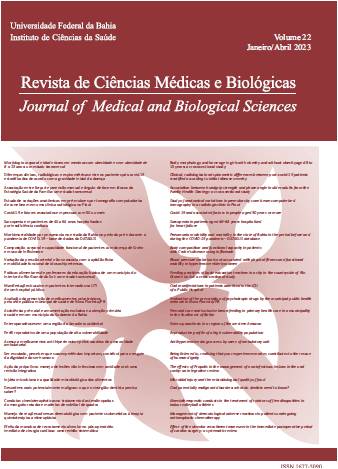Oral potentially malignant disorders
what do dentists need to know?
DOI:
https://doi.org/10.9771/cmbio.v22i1.47788Keywords:
Leucoplasia, Eritroplasia, Queilite Actínica, Liquen Plano OralAbstract
Introduction: Oral Potentially Malignant Disorders (OPMDs) are conditions that may precede the onset of cancer in the oral cavity. Objective: To describe the main clinical features, histological aspects and treatment of leukoplakia, erythroplakia, actinic cheilitis and oral lichen planus. Methodology: this is a review of the current literature, in which articles in the databases of MEDLINE/PUBMED and the Virtual Health Library, published in the last 10 years, were consulted. The descriptors were located using the MeSH controlled vocabulary, namely: Leukoplakia; Erythroplakia, Actinic cheilitis, Oral lichen planus, Diagnosis, Therapeutics. Results: the clinical presentations of OPMDs are diverse. Leukoplakia is the most common and must be distinguished from proliferative verrucous leukoplakia which has a generalized clinical presentation and a tendency to reoccur after excision; erythroplakia, although rare, has a greater chance of becoming malignant. Actinic cheilitis frequently affects the lower lip, is strongly related to sun exposure and can progress to labial squamous cell carcinoma; oral lichen planus has a variety of clinical presentations, with the reticular form being the most common. The erosive, atrophic or bullous type is accompanied by different levels of pain. Biopsy is essential to confirm the clinical suspicion of OPMDs and timely referral to a specialist is indicated. Conclusion: OPMDs can be found during oral examination, thus enabling early diagnosis, correct referral to a specialist and appropriate intervention, which may reduce the rate of progression of these conditions to cancer.
Downloads
Downloads
Published
How to Cite
Issue
Section
License
Copyright (c) 2023 Journal of Medical and Biological Sciences

This work is licensed under a Creative Commons Attribution 4.0 International License.
The Journal of Medical and Biological Sciences reserves all copyrights of published works, including translations, allowing, however, their subsequent reproduction as transcription, with proper citation of source, through the Creative Commons license. The periodical has free and free access.


